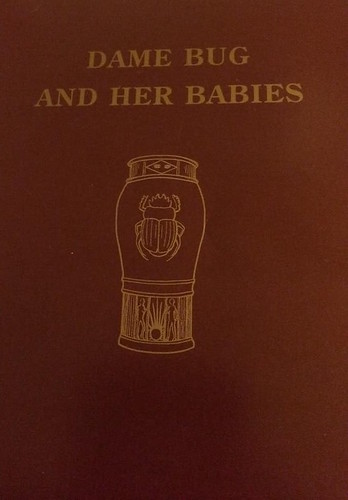A few weeks ago, as I was reading about our museum’s eponym Dr. Stuart W. Frost, I came across a public outreach book he wrote called Ancient Artizans: The Wonders of the Insect World. The first sentence of the book reads “Our purpose is to introduce to the laymen some of the interesting habits of insects which are too often lost in scientific volumes and beyond the reach of the ordinary reader.” The book is designed for anyone to be able to understand, with the removal of scientific names in the main text.
It was interesting to read a book written for the general public in the 1930’s. Each chapter has an artisan theme, such as “Miners,” “Musicians,” and even “Assasins,” and is started off with a related poem. The book quickly snaps from species to species. Seemingly, Frost wanted to share as many insects as possible with readers, and wanted readers to be able to relate to the insects through understood tasks of life. For example, in the chapter “Fishermen,” Frost describes the “fishing” like ability of the larvae of black flies as they filter feed from the flow of the stream. This book introduces the public to a broad range of insects in only 280 pages, and each chapter provides several references for further exploration, and a plea for readers to explore and appreciate insects in their lives.

Last spring, upon graduation from the entomology community at the University of Maine, I received a new book written about Dr. Edith Patch, Without Benefit of Insects, and additionally a book she wrote for children titled Dame Bug and Her Babies. She wrote several other books, including at least two that I found referenced in Dr. Frost’s Ancient Artizans. Reading about Dr. Patch, I learned that she was the first female president of the Entomological Society of America in 1930, and she organized the entomology department at the University of Maine. Amongst many other accomplishments, Dr. Patch wholeheartedly believed that an informed general public began with children and hoped that through writing children’s books which were interesting and scientifically accurate, a generation could be raised that was informed and interested in the natural world. The book was quite popular when it was published in 1913, even though her colleges had warned Dr. Patch that she would not have been taken seriously as a scientist for publishing a children’s book.

Dame Bug and Her Babies is an upbeat and fun book, the first sentence of the preface reading “For any child who asks after hearing a story, – ‘Is it honest or only nonsense?’ this book was written.” As Dr. Frost asked of the reader in Ancient Artizens, Patch pleas that both child and adult find insect representatives from her stories in their own back yards. In one story from the book, “Mr. and Mrs. Scarab-Tumbler,” Patch describes a dung beetle pair as they roll their ball and the female lays her eggs, and the beauty of the beetle is described, asking children to not be ashamed in finding the beetle beautiful, as the ancient Egyptians did as well.

Finally, last weekend Emily, Carolyn, and I attended a conference in State College, PA, hosted by Penn State’s Graduate Women in Science. The Voices conference tackled scientific communication in today’s world. Although much has changed since the early 1900’s, general themes matched those of Dr. Frost and Dr. Patch. During a panel, one speaker suggested that storytelling is a powerful way to demonstrate how interesting your research is. Kimberly Ennico Smith, Ph.D., the Deputy Project Scientist on the New Horizons Pluto Fly-by mission (NASA), gave a talk about three different projects she has worked on and the successes and failures she has seen with effective public communication. Dr. Smith prompted us to know the “why” and themes of our projects, and to always be aware of how that theme is being received.
Effective science communication is important for general public understanding and enthusiasm of the topics we care so much about. We here at the Frost enjoy keeping this blog going! How do you like to share your passion with the public?



